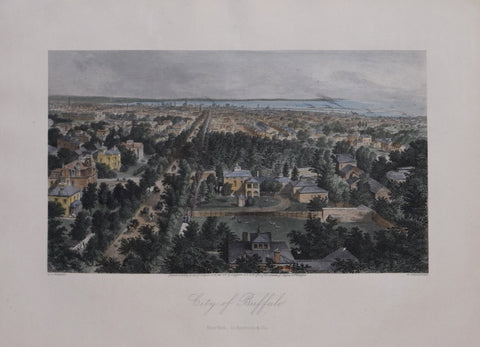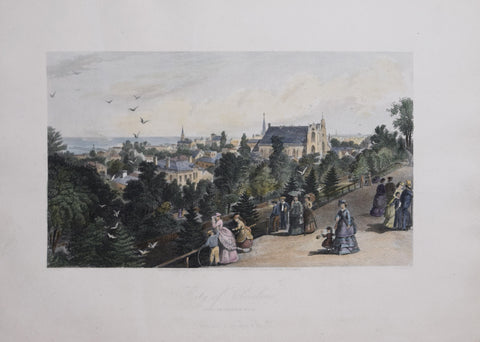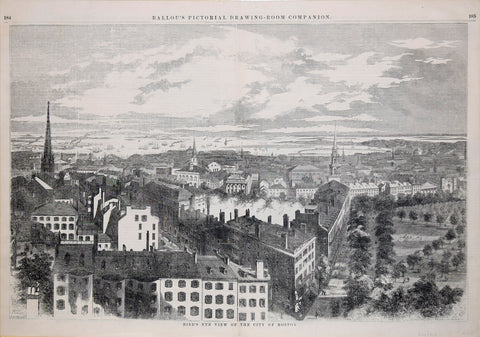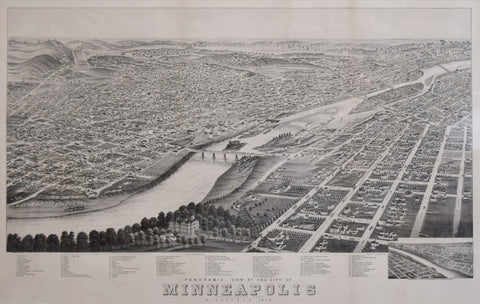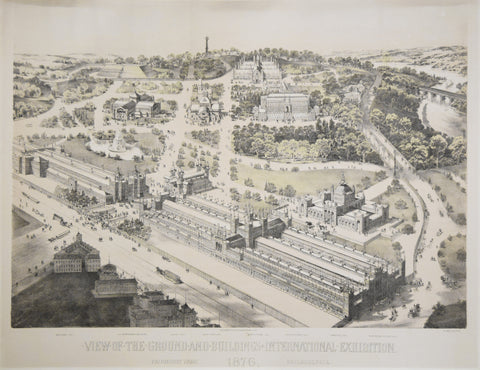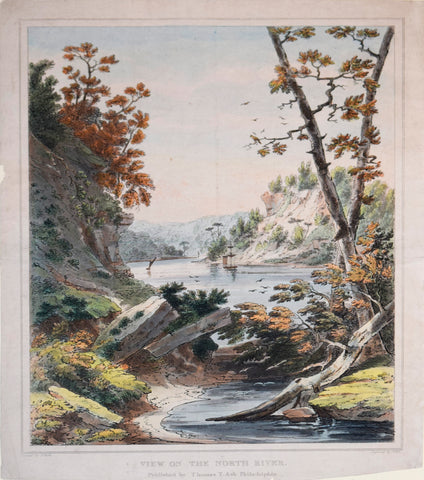
Joshua Shaw (1776-1860), after painting by, View on the North River
Joshua Shaw (1776-1860), after painting by
View on the North River (Hudson River)
John Hill (1812-1879), engraver
Published: Philadelphia, c. 1835, by Thomas T. Ash
Aquatint engraving with hand coloring
Sheet size: 15 x 12"
This is a rare example of a print from an extremely rare work that is now considered to be a 'milestone in American printmaking […] a foundation book for American color-plate publication, being the first publication in the United States of large colored landscapes essentially scenic in effect" (Koke).
This picturesque image of the Hudson or North River is engraved by John Hill, based on the painting by notable landscape painter Joshua Shaw. It comes from a series of twenty plates published under the general title Picturesque Views of American Scenery. The present work features an idyllic scene, framed by branches with autumnal orange-yellow leaves. Throughout the composition, we see open-winged birds in flight, and sailboats both near and far skate across the pristine surface of the river. In the distance can be seen more greenery and hills.
Though born in rural northeast England, Joshua Shaw was a significant figure in the development of American landscape painting in the 18th and 19th century. Orphaned as a child, Shaw developed painterly skills that were mostly self-taught. At age twenty-six, he exhibited at the Royal Academy in London. Shaw then moved to Bath for seven years before returning to London with a growing reputation. By then he had developed a fascination with the sublime beauty of nature, which can be seen in his 1813 masterpiece The Deluge, Toward its Close, a work that won a prestigious prize at the British Institution and led critics to rank Shaw alongside the leading landscape painter of the day, Joseph Mallord William Turner.
Shaw’s exhibitions in London attracted the attention of acclaimed American history painter Benjamin West, who served as president of the Royal Academy at the time. The two became fast friends and it was this friendship that eventually brought Shaw to America in 1817. In the U.S., Shaw envisioned painting a series of essential American landscapes to serve as prototypes for prints that could be disseminated to a flourishing middle class. Picturesque Views of American Scenery began publication in 1820 in collaboration with aquatint master John Hill, a master of aquatint who also was based in Philadelphia. Shaw wrote in the preface: “In no quarter of the globe are the majesty and loveliness of nature more strikingly conspicuous than in America. The vast regions which are comprised in or subjected to the republic present to the eye every variety of the beautiful and sublime.”
While working on Picturesque Views of American Scenery, Shaw painted in Pennsylvania, New Jersey, Maryland, and Virginia, and completed two New York views, including the present one of the Hudson River, which predated the work of noted landscapist Thomas Cole by several years. Shaw’s representations of American landscape helped popularize the picturesque in America, and paved the way for the emergence of what became the prominent Hudson River School of landscape painting in the mid-19th century.
References: Richard Koke, "John Hill (1770-1850): Master of Aquatint," New York Historical Society Quarterly, XLIII (1959)
We Also Recommend

